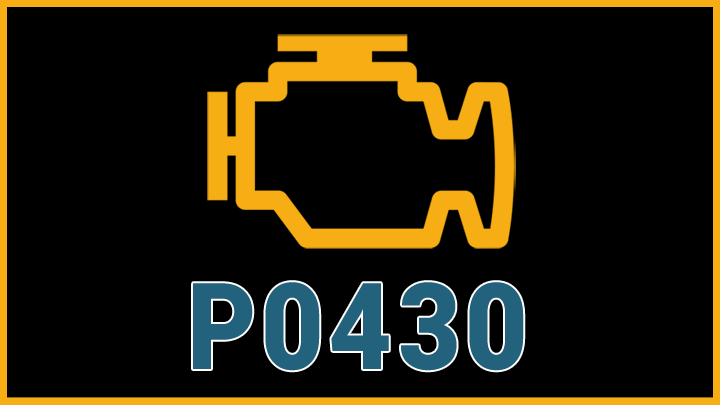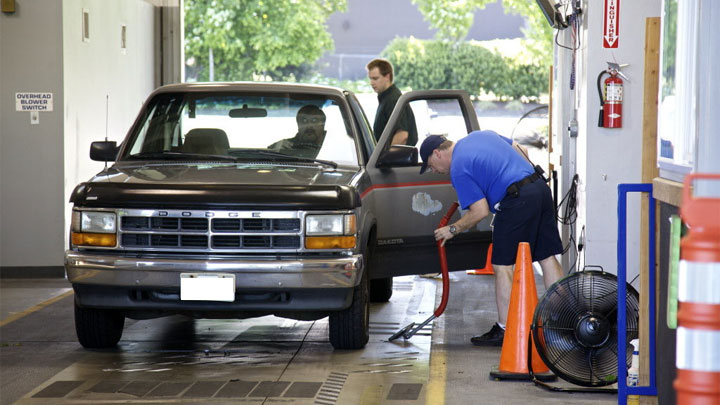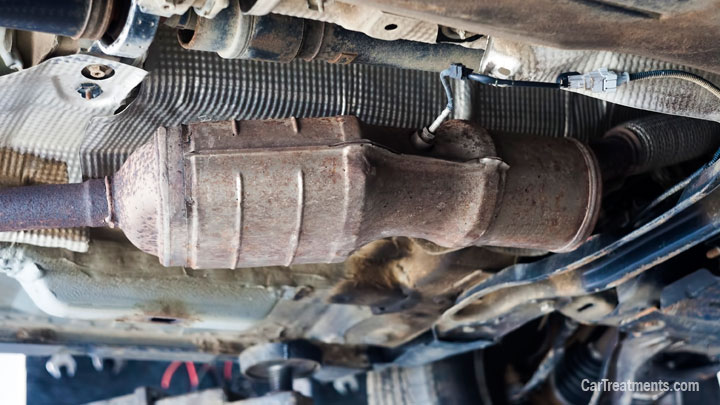P0430 Code (Symptoms, Causes, and How to Fix)
There are few things more panic-inducing than a check engine light. When you don’t know what it means, it’s easy to envision thousands of dollars in repairs and countless hours of frustration.
But the truth is that check engine lights are rarely that expensive, especially if you fix them early on. But does that apply to DTC P0430? Keep reading to learn what causes a P0430 code and how to properly fix it.

What Does Code P0430 Mean?
When it comes to OBD-II trouble code descriptions, they don’t much more cryptic than a code P0430. But when you break it all down, it’s not too complicated. Essentially a code P0430 is telling you that your catalytic converter isn’t converting enough exhaust into water – which is what it’s supposed to be doing.
Understanding how the system works is critical to understanding what this code is telling you. Your exhaust system has two oxygen sensors, one before the catalytic converter and one after. These oxygen sensors report the makeup of the air and let the ECM know how effective the catalytic converter is working.
When you get a code P0430, it means that the second oxygen sensor, the one after the catalytic converter, is displaying too many particulates, or there isn’t enough of a drop from the first oxygen sensors reading. In short, the system doesn’t think the catalytic converter is doing its job.
See Also: Code P0420
Symptoms of Code P0430

If your vehicle has a code P0430, there are a few different symptoms that you might notice, but often there are few, if any, noticeable symptoms of a P0430 engine code.
#1 – Check Engine Light
It might seem redundant listing an engine code as a symptom for an engine code, but most of the time this is all you’re going to notice – at least at first. However, that doesn’t mean you should ignore the problem.
#2 – Rotten Egg Smell
If your code P0430 is from a faulty catalytic converter, there’s a good chance your exhaust will give off a rotten egg smell. The longer you let the problem continue, the worse the smell is going to get.
#3 – Lack of Power
Sometimes your vehicle will have a code P0430 even if the catalytic converter is working as it should. If that’s the case, there’s a good chance you’re going to notice a lack of power. If you have a code P0430 and notice a drop in power, there’s a more serious underlying condition that you need to address immediately.
#4 – Failed Emissions Test
It doesn’t matter why you have a code P0430, if you have one, you’re going to fail an emissions test. While this might not matter depending on where you live, if you do have an emissions test coming up, you’re going to need to repair the engine code to pass.
Causes of Code P0430

There are a few potential causes of a code P0430, but by far the most common is a faulty catalytic converter. We’ve highlighted this and two other possible causes below.
#1 – Faulty Catalytic Converter
Catalytic converters aren’t supposed to last forever, and if you have a code P0430 on an aging vehicle, there’s a good chance this is your problem. Catalytic converters usually last about 10-years or 100,000-miles, but they can last longer.
#2 – Engine Misfires/Internal Engine Damage
It doesn’t matter if your catalytic converter is doing everything it should if there are tons of extra particulates flooding your exhaust. This can happen when your engine is misfiring, you have a blown head gasket or a litany of other damaged engine components.
#3 – Faulty Oxygen Sensors
Let’s start with this – if you have a code P0430, it’s rare that the oxygen sensors are the problem. That’s because the readings for a faulty oxygen sensor are distinctly different than the readings for a faulty catalytic converter.
But just because it’s rare doesn’t mean it’s impossible. If you’ve already ruled out the catalytic converter and internal engine damage, the oxygen sensors might be the problem.
Is Code P0430 Serious?
If a code P0430 is serious depends on the cause of the code. In most cases, it’s because of a faulty catalytic converter, and usually, this isn’t serious. However, if you assume that the code is because of the defective catalytic converter and the actual problem is engine damage or misfires, you can end up causing thousands of dollars in damage by delaying repairs.
So, while a code P0430 isn’t usually serious, you have to get an accurate diagnosis to be sure. Moreover, any time you have a check engine light, you won’t be able to tell when another problem arises.
How to Fix
Most of the time to fix a code P0430, you need to replace the catalytic converter. The bad news is that if you’re taking it to a dealership, you can expect to spend close to $1,800 in repairs. However, if you’re using aftermarket parts and doing it yourself, it can cost you anywhere from $500 to $1,200.
But to be sure that the catalytic converter is the problem, you’ll need to connect an OBD II diagnostic scan tool to rule out any other potential problems.
Using Cataclean or a similar cleaner may help in certain cases and worth the shot before shelling out $1k+ on replacement.
- P0521 Code (Symptoms, Causes, How to Fix) - Mar 22, 2024
- How to PROPERLY Clean 5 Types of Steering Wheel Materials - Feb 19, 2024
- What Should You Do If Your Check Engine Light Comes On? - Nov 6, 2023

I had both cats replace and head gaskets replace and the code still is there p0430 any answers
There could still be an issue with the air fuel ratio. A good scan tool should help you narrow it down. Perhaps you have an exhaust leak, issue with the mass airflow sensor, or issue with an oxygen sensor.
I have a 2016 Honda Pilot. Code P0430 has come on twice, but then goes away. I’ve noticed it comes on when temps drop below 20 degrees, and then goes off when temp warms back up. Any ideas what might cause this?
I wonder if you might have an exhaust leak somewhere. Is your car excessively noisy, particularly when you accelerate?
I have a DTC P0430 and have had both catalytic converters and all O2s replaced. After a few days, maybe 2 or 3 drive cycles the check eng light returns with same DTC PO430. I have had a warranty replacement of both cats and all O2s once and stand to have cats warrantied again. After all this work done I asked the tech what test were done to verify that the cats and O2s were in need of replacement, he stated the check eng light on they read the DTC to be PO430 and therefore replace the cats and O2s. Now I am doing what I should have done originally and go to a dealership to find out exactly how the Catalytic System functioning to set a DTC.
If the vehicle is under warranty I would have the dealership technicians take a look at it. They often have access to more specialized tools and diagnostics equipment that would help them better understand the problem. If this is a widespread issue on this particular vehicle, chances are they’ve seen the failure before and know what to do.